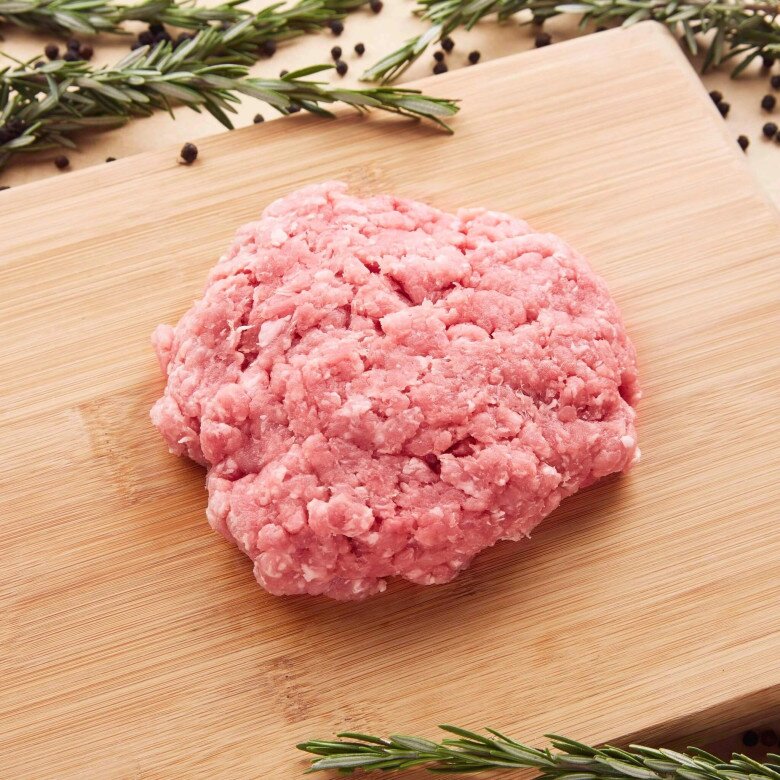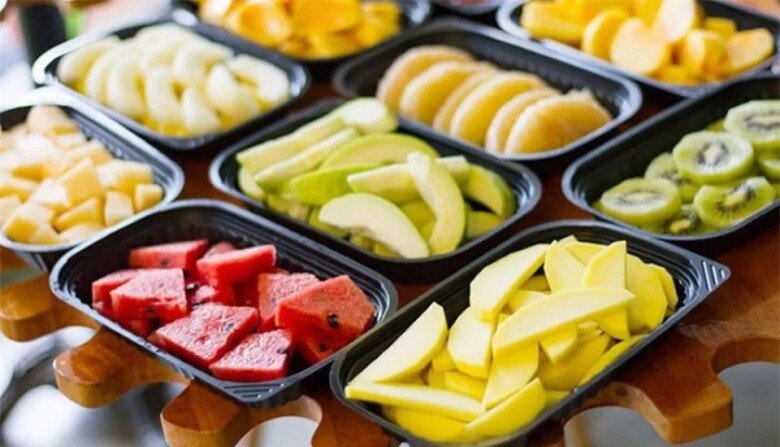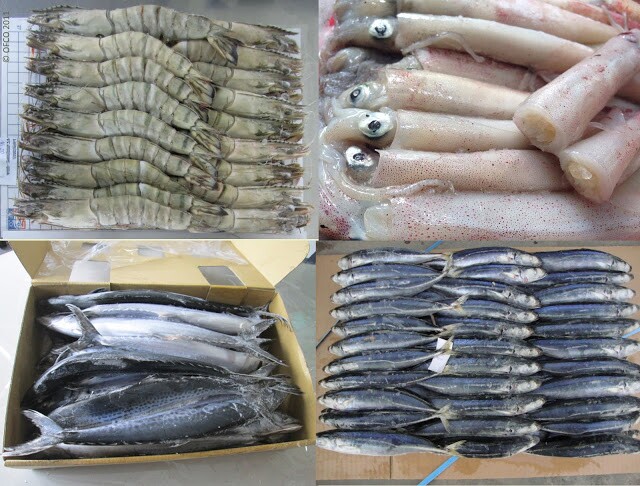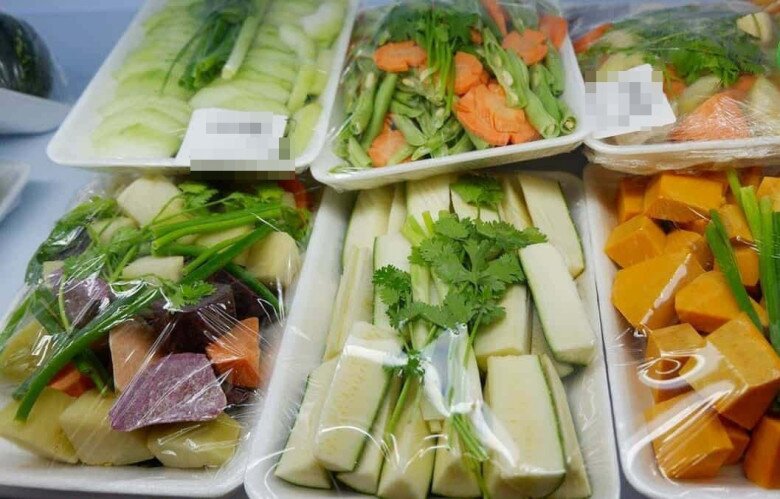Ground Meat
Ground meat is a convenient option for many as it can be quickly turned into delicious dishes such as meatballs, noodles, or stews. However, ground meat is often made from various meat parts, some of which may be of unknown origin or low quality, and may have been improperly stored. The increased surface area exposed to air during the grinding process makes it more susceptible to bacterial contamination, leading to spoilage and unpleasant odors.

Solution: For the best food safety, it is recommended to buy fresh cuts of meat such as shoulder or loin and grind or mince them at home. This way, you can ensure the quality of the meat and retain its freshness. Don’t forget to thoroughly clean your knife, cutting board, and grinder to prevent bacterial growth.
Pre-cut Fruits
Pre-cut fruits sold in supermarkets and convenience stores are popular for their convenience, as they require no preparation. However, they are often stored in less-than-ideal conditions, leading to oxidation and loss of vitamins and nutrients. If not properly packaged or stored, they can be susceptible to bacterial contamination and even cause food poisoning. In some cases, chemicals are used to maintain their appealing colors, which can be harmful to health.

Moreover, sellers may even salvage rotten fruits by cutting away the spoiled parts and selling the seemingly fresh portions. Such fruits already harbor pathogens, and consuming them can be detrimental to your health.
Solution: Opt for buying whole, fresh fruits and cleaning them thoroughly under running water or soaking them in a dilute salt solution for 10-15 minutes to remove dirt and pesticides. Then, cut them into desired portions and store them in airtight containers or ziplock bags in the refrigerator for daily consumption. This way, you can ensure both safety and the retention of their nutritional value and flavor.
Frozen Seafood
Frozen seafood is a popular choice for preserving large quantities of food for extended periods without spoilage. However, some frozen seafood products in the market have been thawed multiple times or improperly stored, resulting in mushy, less-than-fresh meat. Thick ice and unusual colors are warning signs that the seafood may not be of optimal quality and could even be harmful to your health.

Solution: When possible, opt for buying fresh seafood from reputable markets or stores. If you choose frozen seafood, select products that are intact and free from thick ice or discolored areas.
Upon bringing them home, thaw the seafood by submerging it in cold water (avoid using hot water or a microwave, as these methods can lead to a loss of moisture and texture). Once thawed, rinse the seafood before cooking to ensure freshness and safety.
Ready-to-eat Processed Foods
Ready-to-eat processed foods like sausages, meatballs, fried spring rolls, and grilled minced pork rolls are convenient and time-saving. However, many of these products contain high levels of preservatives and artificial flavorings, and they may be fried in recycled oil, which is not beneficial for your health if consumed frequently. Additionally, if not properly stored, these ready-to-eat foods can become a breeding ground for bacteria.

Solution: It is recommended to make your own sausages, meatballs, and other processed foods at home using fresh meat, natural spices, and clean ingredients. There are numerous simple recipes available online. By doing so, you can ensure the quality and safety of the food while also controlling the ingredients used. The preparation process is not as complicated as you might think, and with a little time and attention to detail, you can make a large batch and store it in the freezer for future use.
Frost-bitten Frozen Foods
Frost-bitten frozen foods result from improper storage and lead to a loss of moisture, affecting their taste, texture, and nutritional value. Food affected by frost-bite is typically less appetizing and may impact your overall dining experience.
Solution: To prevent frost-bite, properly store your frozen foods at home by wrapping them tightly in foil, vacuum sealing them, or placing them in airtight containers. Maintain a temperature of -18°C or lower in your freezer. When thawing, transfer the food to the refrigerator overnight or submerge it in cold water; avoid using hot water or a microwave, as these methods accelerate moisture loss.
Reduced-price Near-expiry Foods – Proceed with Caution
While reduced-price near-expiry foods may seem like a great deal, they come with potential risks to your health. Consuming expired food can lead to food poisoning, nutrient loss, or spoilage, especially with perishable items like meat, dairy, and fresh produce. Sometimes, it’s better to pass on a bargain.
Solution: If you decide to purchase reduced-price near-expiry foods, carefully inspect the packaging, smell, and appearance. Buy only what you can consume promptly. For perishable items, ensure proper storage in the refrigerator, and for produce, consider blanching and freezing for later use.
Pre-cut Vegetables
Pre-cut vegetables are a convenient option for busy individuals, but they are more susceptible to bacterial contamination if not properly stored. The pre-cutting process removes the natural protective layers of the vegetables, leading to a loss of vitamins and fiber. Additionally, pre-cut vegetables tend to spoil faster than their whole counterparts.

Solution: Opt for buying whole, fresh vegetables and soaking them in a dilute salt solution for 10-15 minutes to remove any dirt or pesticides. Afterward, rinse them with clean water and cut them as needed. Store the prepared vegetables in airtight containers or ziplock bags in the refrigerator’s crisper drawer, and aim to consume them within 1-2 days to ensure maximum freshness.
These insights not only help you make more informed choices when shopping but also provide valuable tips for food preparation and storage, ensuring that your family enjoys nutritious and safe meals. By applying these suggestions, your grocery shopping and meal preparation will become more efficient and rewarding.
Video: Types of foods to be cautious about when shopping at the supermarket.
Soak Meat in Tepid Water to Hasten Defrosting and Preserve Nutrients
Many people make the common mistake of submerging meat directly into tap water to defrost it. This method not only results in slow thawing but also leads to a loss of flavor and nutrients, and increases the risk of bacterial contamination. So, what is the best way to quickly defrost meat while retaining its nutritional value?



































